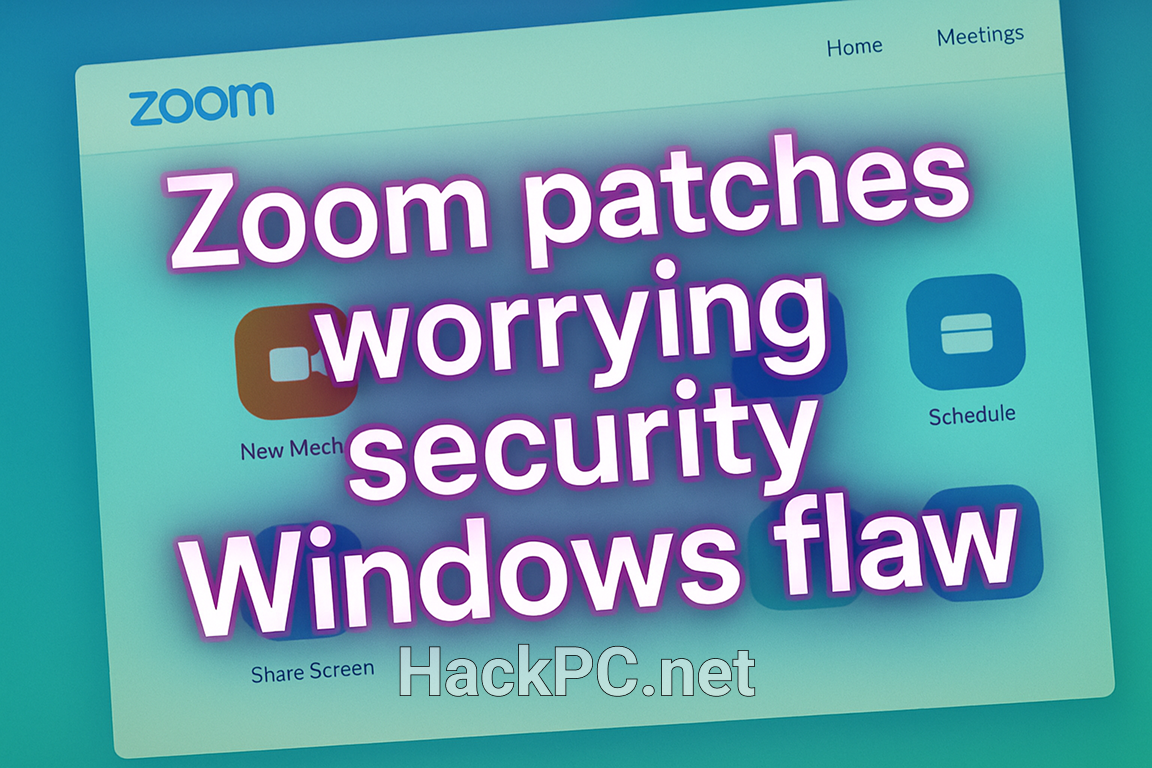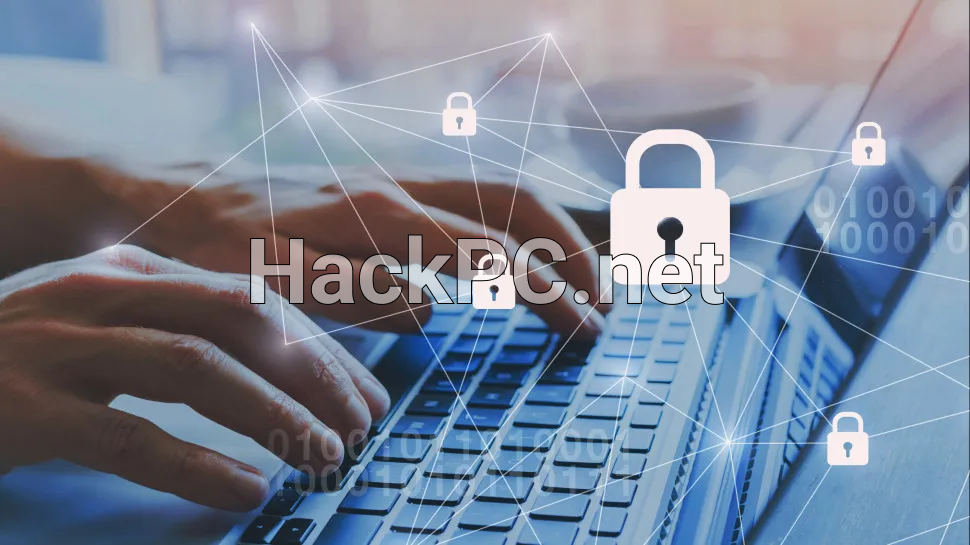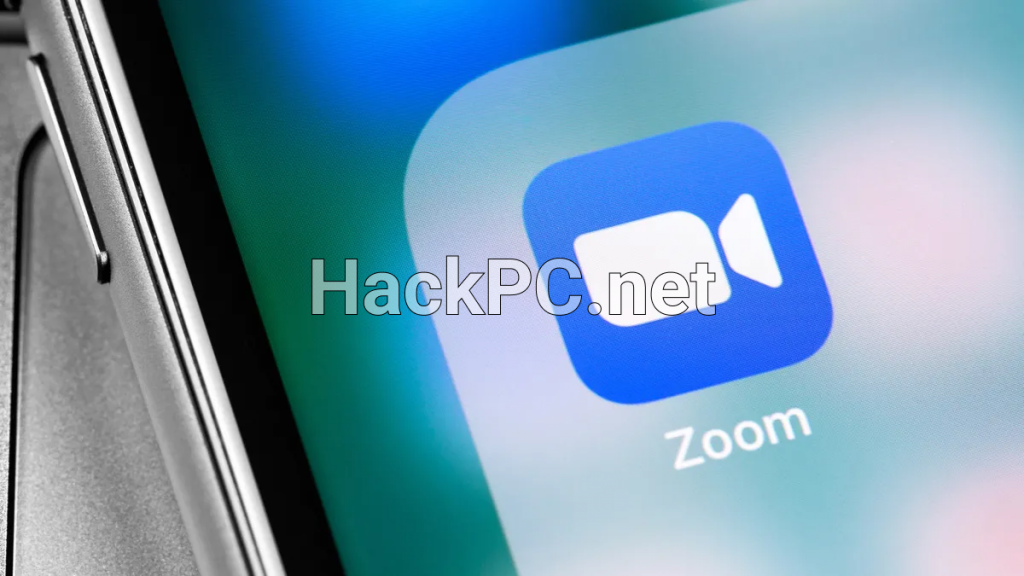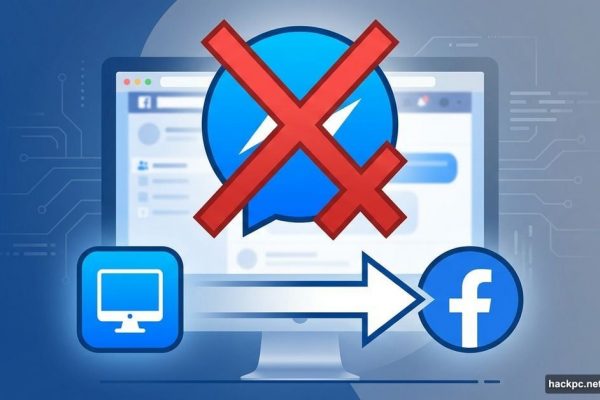
Overview: When Trusted Software Becomes an Attack Vector
Zoom’s latest critical security update addressing CVE-2025-49457 represents more than a routine patch—it’s a compelling case study in how modern collaboration tools have evolved from convenience applications into critical infrastructure requiring enterprise-grade security. The vulnerability, carrying a severe CVSS score of 9.6, exposes fundamental architectural challenges in Windows application development while highlighting the delicate balance between rapid feature deployment and security robustness.
The flaw affects millions of users running Zoom Windows clients, from individual remote workers to Fortune 500 boardrooms, creating an urgent imperative for immediate patching while raising broader questions about the security of video conferencing platforms in our increasingly distributed workplace ecosystem.
Key Highlights: Understanding the Critical Flaw
- Sophisticated privilege escalation vulnerability exploiting Windows DLL search path mechanisms
- Network-accessible attack vector requiring no user authentication for initial exploitation
- Comprehensive impact across Zoom Desktop Client, VDI implementations, Rooms installations, and Meeting SDK deployments
- Urgent patch deployment to version 6.3.0 addressing fundamental architectural vulnerabilities
- Industry-wide implications as similar flaws emerge across multiple collaboration platforms simultaneously
Critical Analysis: The Nuanced Security Landscape
The CVE-2025-49457 vulnerability isn’t merely a coding error—it’s symptomatic of deeper architectural tensions in modern software development. Zoom’s Windows client fell victim to an untrusted search path vulnerability, a class of security flaws that has plagued Windows applications for over two decades yet continues to resurface with alarming regularity.
What makes this particular instance compelling isn’t just the vulnerability itself, but what it reveals about the current state of enterprise video conferencing security. The flaw emerged from Zoom’s own Offensive Security team—a positive indicator of proactive security research, yet simultaneously concerning given this represents the latest in a series of similar vulnerabilities including CVE-2024-24691 and CVE-2024-24697 from earlier this year.
The timing of this Zoom patches worrying security Windows flaw announcement coincides with similar critical updates from Microsoft, Xerox, and other major vendors, suggesting either coordinated disclosure or shared underlying vulnerabilities in Windows architecture. This convergence raises important questions about systemic security challenges that transcend individual vendors.
For enterprise security teams managing Zoom Workplace Apps deployments, the vulnerability presents a complex risk calculation. On one hand, the network-based privilege escalation capability poses immediate danger to corporate communications security. On the other, the patch deployment itself requires careful orchestration to avoid disrupting business operations dependent on video conferencing infrastructure.
Technical Deep Dive: Anatomy of a DLL Hijacking Attack
The Mechanics of Exploitation
At its core, CVE-2025-49457 exploits a fundamental characteristic of Windows’ Dynamic Link Library loading mechanism—a design decision dating back to Windows 2000 that continues to create security challenges. When Zoom’s Windows client loads DLL files without specifying absolute paths, it triggers Windows’ standard search order, creating an opportunity for malicious actors to inject their code into the trusted application’s execution flow.
According to detailed research from CrowdStrike’s threat hunting teams, modern DLL hijacking has evolved far beyond simple file placement. The attack methodology for exploiting this Zoom privilege escalation fix involves several sophisticated vectors:
Search Order Manipulation: Windows follows a predictable sequence when searching for DLLs—starting with the application’s directory, proceeding through system directories, and eventually including directories in the PATH environment variable. Attackers exploit this predictability by placing malicious DLLs in locations searched before legitimate libraries.
Phantom DLL Exploitation: Research from Palo Alto Networks’ Unit 42 reveals that Windows references numerous DLL files that don’t actually exist. Attackers can create these “phantom” DLLs, which the system will then load when referenced, providing a stealthy persistence mechanism.
Side-Loading Attacks: Rather than replacing legitimate DLLs, sophisticated attackers place malicious libraries alongside legitimate applications, exploiting the trust relationship between signed executables and their dependencies. This technique has been observed in APT campaigns, including those attributed to state-sponsored groups.

Real-World Attack Scenarios
The practical exploitation of this Zoom Desktop Client security update vulnerability demonstrates concerning simplicity. Security researchers at SecurityAffairs documented multiple attack scenarios:
Corporate Network Share Exploitation: In enterprise environments where users regularly access shared network drives, attackers can strategically place malicious DLLs on these shares. When employees launch Zoom while connected to compromised shares, the application loads the attacker’s code with Zoom’s privileges—often including camera, microphone, and screen capture permissions.
Download Folder Contamination: Perhaps most concerning is the attack’s accessibility. Simply placing a crafted DLL in a user’s download folder—a directory notorious for accumulating files without regular cleaning—can trigger exploitation during Zoom launches or updates. This vector requires no sophisticated access, making it viable for even unsophisticated attackers.
Supply Chain Infiltration: The vulnerability opens doors for supply chain attacks where compromised third-party software could plant DLLs targeting Zoom specifically. Given the platform’s ubiquity in corporate environments, it represents an attractive target for advanced persistent threats seeking initial access to protected networks.
Historical Context and Pattern Recognition
This isn’t Zoom’s first encounter with DLL-related vulnerabilities, nor is it likely to be the last. The platform’s security evolution reveals a pattern worth examining:
February 2024 – CVE-2024-24691: A critical improper input validation flaw (CVSS 9.6) that enabled network-based privilege escalation without authentication, as documented by SecurityWeek. The vulnerability affected multiple Zoom products and required urgent patching across enterprise deployments.
CVE-2024-24697: Another untrusted search path vulnerability specifically targeting 32-bit Windows clients, demonstrating that DLL hijacking issues weren’t isolated incidents but symptomatic of deeper architectural challenges in Zoom’s Windows implementation.
November 2024 Updates: Zoom addressed six vulnerabilities including two high-severity privilege escalation issues (CVE-2024-45421 and CVE-2024-45419), continuing a pattern of regular security updates addressing fundamental flaws.
The recurrence of similar vulnerabilities suggests systemic challenges in secure Windows application development. According to analysis from MITRE’s CVE database, Zoom has addressed numerous security issues since its pandemic-era surge in popularity, many involving privilege escalation or information disclosure.
Enterprise Impact Assessment: Beyond Technical Vulnerabilities
Quantifying Business Risk
For organizations dependent on Zoom for critical communications, CVE-2025-49457 represents a multifaceted threat that extends beyond technical exploitation into operational, reputational, and regulatory domains. The vulnerability’s impact varies significantly based on deployment context:
Executive Communications Infrastructure: Modern boardrooms rely on Zoom for sensitive strategic discussions, merger negotiations, and earnings preparations. A successful privilege escalation could expose market-moving information, creating insider trading risks and competitive disadvantages. The Zoom VDI client update becomes critical when considering that VDI deployments often handle the most sensitive organizational communications.
Healthcare Telehealth Platforms: Medical practices have integrated Zoom into patient care workflows, processing protected health information subject to HIPAA regulations. Exploitation could result in privacy breaches triggering mandatory disclosure requirements, regulatory penalties, and civil liability. The Meeting SDK vulnerability fix gains urgency when custom healthcare integrations might amplify exposure.
Financial Services Consultations: Investment advisors, accountants, and legal professionals conduct confidential client meetings via Zoom, sharing screens displaying sensitive financial data, legal documents, and strategic advice. The Windows privilege escalation protection becomes paramount when considering the fiduciary obligations and regulatory requirements governing these communications.
Educational Institutions: Schools and universities hosting classes, administrative meetings, and research collaborations face unique challenges. Student privacy laws, research confidentiality, and intellectual property concerns converge when considering how a Zoom Rooms security update impacts campus-wide deployments.
Attack Chain Analysis and Threat Modeling
Security research from Okta’s identity security team demonstrates how DLL hijacking vulnerabilities enable sophisticated attack chains:
- Initial Compromise: Attackers gain limited access through phishing, watering hole attacks, or exploitation of other vulnerabilities, establishing a foothold sufficient to write files to user-accessible directories.
- DLL Deployment: Malicious libraries are strategically placed in directories within Zoom’s search path, often masquerading as legitimate files with convincing names and digital signatures mimicking authentic libraries.
- Persistence Establishment: When users launch Zoom for routine meetings, the application loads the malicious DLL, executing attacker code with Zoom’s privileges. The malware establishes persistence mechanisms ensuring continued access even after patching.
- Privilege Escalation: If Zoom runs with elevated privileges—common in enterprise deployments for system integration—attackers inherit these privileges, gaining broader system access than initially available.
- Lateral Movement: With established access and potentially elevated privileges, attackers pivot to other systems, exfiltrate sensitive data captured during meetings, or deploy ransomware across the network.
- Data Exfiltration: Meeting recordings, chat logs, and screen shares become accessible, potentially exposing intellectual property, strategic plans, and confidential communications spanning months or years.
Compliance and Regulatory Implications
The vulnerability raises significant compliance concerns across regulated industries. Organizations must consider how unpatched vulnerabilities impact their regulatory posture:
GDPR Considerations: European data protection regulations require organizations to implement appropriate technical measures protecting personal data. Known critical vulnerabilities left unpatched could constitute negligence, triggering substantial penalties up to 4% of global annual revenue.
SOX Compliance: Public companies subject to Sarbanes-Oxley requirements must maintain internal controls over financial reporting. Video conferencing vulnerabilities that could expose financial discussions or audit communications may require disclosure and remediation documentation.
HIPAA Requirements: Healthcare organizations must conduct risk assessments and implement safeguards protecting electronic protected health information (ePHI). The Zoom Windows client security vulnerability could necessitate breach notifications if exploitation is suspected.
Government Contractors: Organizations following NIST frameworks or CMMC requirements face specific timelines for addressing known vulnerabilities. The U.S. Cybersecurity and Infrastructure Security Agency (CISA) maintains a Known Exploited Vulnerabilities catalog that could include this flaw, mandating patching within prescribed timeframes.
Mitigation Strategies: From Urgent Patches to Architectural Evolution
Immediate Response Requirements
The critical nature of CVE-2025-49457 demands immediate action without the luxury of extended testing cycles. Organizations must balance urgency with operational stability:
Rapid Deployment Framework:
- Asset Inventory: Identify all Zoom installations across the enterprise, including desktop clients, VDI implementations, Rooms deployments, and SDK integrations
- Risk Prioritization: Focus initial patching on high-value targets—executive systems, financial departments, and systems handling sensitive data
- Staged Rollout: Deploy updates to pilot groups before organization-wide implementation, monitoring for compatibility issues
- Verification Protocols: Confirm successful updates through version checking and vulnerability scanning
- Exception Management: Document systems unable to update immediately and implement compensating controls
Manual Update Procedures: For individual users and small organizations, the update process requires attention to detail:
- Launch the Zoom application and access profile settings
- Navigate to the update section and initiate checking for updates
- Confirm installation of version 6.3.0 or later
- Restart the application to ensure all components load patched libraries
- Verify successful update through the About dialog
The official Zoom Security Bulletin page provides authoritative guidance on update procedures and should be monitored for additional information.
Advanced Defensive Strategies
While patching addresses the immediate vulnerability, comprehensive security requires defense-in-depth approaches addressing the underlying attack vectors:
DLL Loading Hardening: Research from SecurityScorecard emphasizes implementing multiple controls:
- Windows Defender Application Control (WDAC): Create policies preventing unauthorized DLL loading, particularly from user-writable directories
- AppLocker Rules: Define explicit allowlists for acceptable DLLs, blocking execution of unsigned or unknown libraries
- SafeDllSearchMode Enforcement: Configure registry settings enforcing secure search ordering, preventing current directory searches
- KnownDLLs Registry: Specify trusted library locations, ensuring Windows loads legitimate DLLs from protected system directories
Network Architecture Improvements: Isolating video conferencing infrastructure limits potential blast radius:
- VLAN Segmentation: Deploy Zoom clients on dedicated network segments with restricted access to critical resources
- Zero Trust Network Access: Implement identity-based access controls verifying every connection regardless of network location
- Proxy Isolation: Route Zoom traffic through dedicated proxies enabling deep packet inspection and threat detection
- Cloud Access Security Brokers: Monitor and control Zoom usage, detecting anomalous behavior indicative of exploitation
Detection and Response Capabilities: Red Canary’s threat detection research provides frameworks for identifying exploitation attempts:
- Process Monitoring: Alert on Zoom.exe executing from unexpected paths or loading unusual DLLs
- File Integrity Monitoring: Track modifications to directories in Zoom’s search path
- Behavioral Analytics: Identify unusual patterns such as Zoom processes spawning unexpected child processes
- Memory Analysis: Detect injected code or suspicious memory modifications within Zoom processes
Long-Term Security Architecture Evolution
The recurring nature of DLL vulnerabilities in Zoom and other Windows applications demands strategic architectural changes:
Application Containerization and Isolation: Modern containerization technologies can limit exploitation impact:
- Windows Sandbox: Run Zoom in isolated environments preventing system-wide compromise
- Application Guard: Leverage Microsoft’s isolation technology for untrusted applications
- Virtual Desktop Infrastructure: Deploy Zoom within VDI environments enabling centralized security controls
- Micro-VM Isolation: Utilize technologies like Bromium or Qubes OS for hardware-enforced isolation
Secure Development Lifecycle Integration: Organizations developing custom integrations must incorporate security throughout development:
- Static Analysis: Identify insecure DLL loading patterns during code review
- Dynamic Testing: Validate runtime behavior under attack conditions
- Dependency Scanning: Audit third-party libraries for known vulnerabilities
- Security Champions: Embed security expertise within development teams
Vendor Risk Management Evolution: The Zoom vulnerability underscores the need for mature vendor risk programs:
- Security Requirements: Mandate specific security controls in vendor contracts
- Continuous Monitoring: Track vendor security postures through ongoing assessments
- Incident Response Coordination: Establish communication channels for security events
- Alternative Planning: Maintain contingency options for critical communication needs

Industry Context: Broader Implications for Collaboration Security
The Evolving Threat Landscape
Recent discoveries documented by Cyber Security News reveal new DLL hijacking techniques exploiting the trusted WinSxS folder, demonstrating continued innovation in exploitation methodologies. These advances suggest that patching individual vulnerabilities provides temporary relief rather than lasting solutions.
The simultaneous disclosure of critical vulnerabilities across multiple vendors—including Microsoft’s August 2025 Patch Tuesday addressing over 100 flaws and Xerox’s remote code execution patches reported by The Hacker News—indicates potential systemic issues in Windows security architecture or coordinated vulnerability research efforts.
Lessons from Historical Incidents
Zoom’s security challenges during the pandemic era provide important context. According to analysis from the Cloud Security Alliance, the platform faced multiple security incidents including:
- Zoombombing: Unauthorized meeting access exploiting weak security defaults
- Encryption Misrepresentation: Claims of end-to-end encryption that proved inaccurate
- Credential Stuffing: Widespread account compromises using leaked passwords
- Privacy Concerns: Data sharing with third parties without adequate disclosure
These historical issues demonstrate Zoom’s security evolution from a convenience-focused application to an enterprise-grade platform—a transformation still in progress as evidenced by CVE-2025-49457.
Comparative Vendor Analysis
Zoom’s vulnerability management approach warrants comparison with industry peers:
Microsoft Teams: While benefiting from integration with Windows security features, Teams has faced its own vulnerabilities including token theft and privilege escalation issues, suggesting that platform integration doesn’t guarantee security.
Cisco Webex: Traditional enterprise focus has resulted in fewer consumer-facing incidents but hasn’t prevented critical vulnerabilities including authentication bypasses and remote code execution flaws.
Google Meet: Browser-based architecture eliminates some client-side vulnerabilities but introduces different attack surfaces through browser exploits and extension compromises.
The commonality of security challenges across platforms suggests that collaboration security requires industry-wide improvements rather than vendor-specific solutions.
Future Outlook: Strategic Recommendations and Emerging Challenges
Anticipating Next-Generation Threats
As documented by CyberArk’s threat research, DLL hijacking techniques continue evolving with new tools and methodologies emerging regularly. Organizations must prepare for:
AI-Accelerated Vulnerability Discovery: Machine learning systems increasingly identify novel vulnerability patterns faster than traditional research methods, potentially discovering new DLL hijacking vectors before defenders can respond.
Supply Chain Complexity: As collaboration platforms integrate with expanding ecosystem partners, each integration introduces potential vulnerability chains that attackers can exploit.
State-Sponsored Innovation: Nation-state actors continue developing sophisticated exploitation techniques, particularly targeting communication platforms that process sensitive government and corporate information.
Hybrid Attack Vectors: Combining DLL hijacking with other techniques like living-off-the-land binaries (LOLBins) creates detection-resistant attack chains challenging traditional security controls.
Building Resilient Communication Infrastructure
Organizations must evolve beyond reactive patching toward proactive security architectures:
Platform Diversification: Maintaining multiple communication platforms prevents single points of failure while complicating attacker targeting.
Security-First Procurement: Evaluate collaboration tools based on security architecture, vulnerability response history, and transparency rather than features alone.
Continuous Security Validation: Regular penetration testing, red team exercises, and vulnerability assessments specifically targeting collaboration infrastructure.
Incident Response Preparedness: Develop and test response plans for collaboration platform compromises, including communication alternatives and data recovery procedures.
Verdict: Urgent Action Within Strategic Context
CVE-2025-49457 represents both an immediate crisis requiring urgent patching and a strategic inflection point for enterprise collaboration security. Zoom’s rapid response through its offensive security team demonstrates improved security maturity, yet the pattern of recurring DLL vulnerabilities reveals persistent architectural challenges that transcend individual vendors.
The vulnerability’s critical CVSS score of 9.6, combined with network-accessible exploitation requiring no authentication, creates an immediate imperative for patching to version 6.3.0 or later. Organizations cannot afford to delay given the ease of exploitation and potential for catastrophic impact on confidential communications.
Yet this urgent response must occur within a strategic context recognizing that collaboration platforms have evolved into critical infrastructure requiring comprehensive security programs. The days of treating video conferencing as convenience tools have passed—these platforms now process the most sensitive organizational communications and require corresponding security investments.
For security teams, the path forward requires balancing immediate tactical responses with long-term strategic evolution. Patch now, but prepare for the next vulnerability. Implement compensating controls, but recognize their limitations. Monitor for exploitation, but assume compromise is possible.
The broader lesson from CVE-2025-49457 extends beyond Zoom to encompass the entire collaboration ecosystem. As hybrid work becomes permanent and digital communication platforms become essential infrastructure, their security directly impacts organizational resilience. The vulnerability serves as a reminder that in our interconnected digital environment, the security of communication platforms isn’t just an IT concern—it’s a business imperative affecting every aspect of modern operations.
Organizations that recognize this reality and respond with appropriate urgency and strategic thinking will emerge more resilient. Those that treat this as just another patch to deploy risk learning expensive lessons about the critical importance of collaboration platform security in our distributed digital future.
Critical Action Required: Update all Zoom Windows installations to version 6.3.0 or later immediately. Monitor the Zoom Security Bulletin page for updates and implement recommended hardening measures without delay. The window for exploitation remains open—act now.



Comments (0)